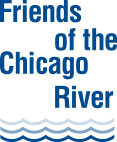Students Explore the Chicago River through Storytelling and Stewardship

In Ocotber, in a powerful collaboration bridging science, storytelling, and student engagement, the Explorer-Educator Exchange Program of the National Geographic Society teamed up with the Chicago Public Schools and the Chicago River Schools Network (CRSN) of Friends of the Chicago River to immerse students in the cultural, ecological, and historical narratives of the Chicago-Calumet River system.
The Explorer-Educator Exchange Program is designed to connect National Geographic Explorers with innovative educators to co-create engaging, community-rooted educational experiences. For this initiative, Explorer Andrea Villarreal Rodrίguez, a storyteller and community organizer from Monterrey, Mexico, partnered with Chicago-based Spanish teacher and fellow Explorer-Educator Cara Bucciarelli from LaSalle II Magnet School. Together, they developed an experiential learning project rooted in the question: “How might we use storytelling to help Chicago youth see themselves as stewards of the Chicago River?” The team invited Friends’ Education Manager Mark Hauser to help deepen the river-based learning and environmental components.
“The Chicago River is an extraordinary story, one that reminds us of the endless possibilities held within our urban rivers,” Andrea Villarreal Rodrίguez. “Cara and I are so grateful to have teamed up with Mark, whose knowledge and passion for the river inspired our students to look closer at the waterway they’ve known all their lives. Together, we’re excited to build a collective archive of the students’ photographs, writing and drawings, a testament to how careful observation can spark stewardship. I hope the students continue to stay curious about their surroundings and recognize how deeply the river intertwines with their everyday lives.”
The special collaboration led to two bilingual field experiences this month, with 38 7th and 8th grade students from Bucciarelli’s Spanish classes at LaSalle II. The first trip, on October 6, took place at LaBagh Woods of the Forest Preserves of Cook County along the North Branch of the Chicago River. The second, on October 9, brought students to Ping Tom Memorial Park, a vibrant urban green space in Chinatown along the South Branch of the Chicago River.
The goal of these outings was multifaceted: to help students explore the ecological and cultural distinctions between the two sites, reflect on their connections to the river, and use storytelling tools—such as photography and bilingual journaling—to document their experiences. A field journal, beautifully designed by Villarreal Rodrίguez, guided student reflection in both Spanish and English.
Leading up to the trips, Hauser gave classroom presentations on topics such as Indigenous land use, the reversal of the Chicago River, urban park development, and local wildlife. These lessons laid the foundation for students to understand how the river has evolved and why it matters today.
The project will culminate in a public-facing StoryMap, co-created by the students and the Explorer-Educator team. This digital storytelling platform will highlight student narratives, images, and reflections, giving voice to a new generation of environmental stewards.
This partnership exemplifies how cross-disciplinary collaboration—between national organizations, local educators, and engaged students—can foster deeper learning and a stronger sense of connection to place. It also underscores the vital role of storytelling in empowering youth to care for the Chicago-Calumet River system.

